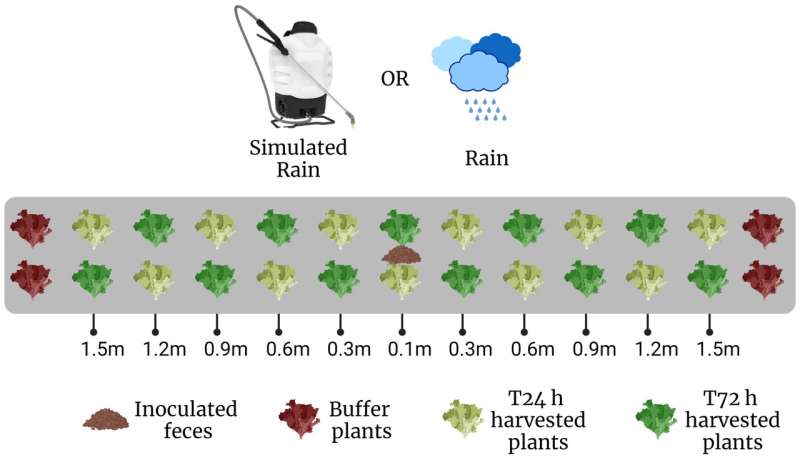This article has been reviewed according to Science X's editorial process and policies. Editors have highlighted the following attributes while ensuring the content's credibility:
fact-checked
peer-reviewed publication
trusted source
proofread
Safeguarding produce from E. coli contamination

Leafy greens such as spinach and lettuce are among the most nutrient-packed foods we can eat—and some of the most prone to make us miserable, or worse. The pathogenic bacterium Escherichia coli O157:H7 causes millions of illnesses globally each year, health authorities say, including thousands of severe infections that can lead to kidney failure and even death.
The infections are often contracted from contaminated produce irrigated with water that contains animal waste runoff or grown in open fields where intruding wildlife leave feces.
To help address this challenge, a University of Maryland food safety expert is conducting microbial research to determine best practices for commercial growers who find evidence of wildlife feces, or scat, in their fields.
Shirley Micallef, a professor in the Department of Plant Science and Landscape Architecture, recently concluded a series of field trials on Maryland's Eastern Shore that examined how E. coli moves from scat to a lettuce crop following a rain event.
The results from the research, which involved other faculty and students in the College of Agriculture and Natural Resources, were recently published in the journal Frontiers in Plant Science.
Micallef aims to determine a specific safety radius for a "no harvest" zone if farmers find evidence of wildlife intrusion, data that will be useful for mid-Atlantic produce growers and the U.S. Food and Drug Administration. Due to variance of wildlife, soil composition, farming scale and climate, the data and metrics in place for California may not be suited for Maryland, Micallef said.
"This matches well with the center's goal of research, education and outreach that is focused on the concept of 'One Health'—wherein interconnected microbiomes affect the health and well-being of plants, the environment, animals and humans equally," Micallef said. "They all interact with each other at some level."
More information: Adam L. Hopper et al, Rain splash-mediated dispersal of Escherichia coli from fecal deposits to field-grown lettuce in the mid- and south Atlantic U.S. regions is affected by mulch type, Frontiers in Plant Science (2024). DOI: 10.3389/fpls.2024.1370495
Journal information: Frontiers in Plant Science
Provided by University of Maryland




















